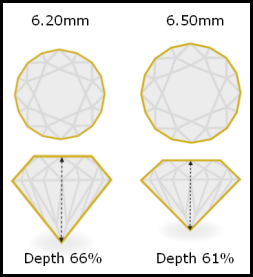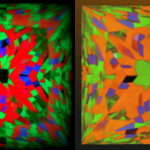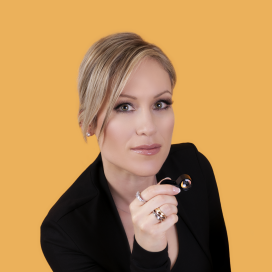Top 5 Common Diamond Buying Myths
It is a sad fact that the diamond industry is still a bit behind in terms of being ethical, standardized, and accountable for its selling practices. For many years consumers have been duped into believing the “hype” of what everyday jewelers and mall shops have been preaching. Here are 5 very common diamond buying myths that many people believe about diamonds…
Myth #1
“Colorless diamonds are the most beautiful!”
Diamond Buying Fact: Colorless diamonds (D, E, and F) are very rare and very expensive with ‘D’ being translucent. However, be careful here because rare and expensive doesn’t necessarily translate to brilliant and beautiful.
Diamond color is actually a rarity characteristic and it’s quite possible for a ‘D’ colored diamond to appear dull, dark, and lifeless if it isn’t cut well. Some more food for thought: the average person would have a difficult time telling the difference between a “D” colored diamond and an “I” colored diamond if viewed separately. So what does one do? Color is a subjective and personal choice and is largely based on budget and preferred carat weight. ODBA’s The Diamond Genie offers color recommendations for any diamond shape based on what metal setting (white gold/platinum, yellow gold, or rose gold) you choose. This will offer you some options and see for yourself how widely color grade affects price.
Myth #2
“The higher the clarity grade, the more a diamond will sparkle!”
Diamond Buying Fact: Clarity grade has NO EFFECT on a diamond’s brilliance (except in a diamond with excessive clouds, see diamond clarity for more information)
Purchasing a diamond that is either Flawless, Internally Flawless, Very Very Slightly Included (1,2), or VS1 will be a significant cost premium for which you cannot visually appreciate. These high clarity grades have nothing to do with brilliance or sparkle. How a diamond reflects light is directly influenced by how well it is cut. So, when it comes to clarity grades, it is best to choose a diamond that is “eye-clean”. Eye-clean diamonds are diamonds that show no visual inclusions or blemishes to the unaided eye when looking straight down into the crown. Diamonds with clarity grades of VS2, SI1, SI2 or even I1 can be eye-clean or prongable (when a jewelry prong covers the inclusion).
Myth #3
“You can save tons of cash if you just get a ‘good cut’ or ‘very good cut’ diamond!”
Diamond Buying Fact: A diamond’s cut is THE MOST IMPORTANT C! Cut Is Queen.
This has to be one of the biggest myths. So many people are purchasing inferior cut diamonds that are “under performers”; meaning that they do not reflect the maximum amount of light back to the observer and are not very sparkly or brilliant at all. If you are going to invest in one quality that would make your diamond buying purchase a success, then please pay attention to a diamond’s cut!
A diamond’s cut is the single most important factor when determining the amount of brilliance a diamond has. This is the only characteristic that is affected by humans and is definitely not one you want to cut corners on.
Myth #4
“My girlfriend wants a (.75ct, 1.00ct, 1.25ct, 1.50ct or 2.00ct) diamond, so at least I know how to buy that!”
Diamond Buying Fact: Diamond carat weight is NOT the same thing as diamond size.
Perhaps one of the more difficult concepts to grasp when it comes to diamond carat weight is how the diamond is visually represented when looking at it “face-up”. In other words, it is very possible to purchase a 1.00ct diamond, but have it look smaller than another 1.00ct diamond. How is this possible? This all comes down to a diamond’s cut (another reason for purchasing a well-cut stone) and how well the diamond’s facets are proportioned. Many diamond cutters still cut inferior cut stones just so that they can maintain the higher carat weight (which will cost more on the diamond market).

An example of a 1 carat diamond with different cut proportions. Notice the diamond on the right has a larger table, which makes it visually BIGGER than the diamond on the left.
Myth #5
“I heard it is perfectly acceptable to buy a loose diamond without a diamond grading report/certificate”
Diamond Buying Fact: It’s is extremely dangerous to purchase a diamond without a valid 3rd party diamond grading report or certificate. Additionally, it is not a consumer’s responsibility or expense to have to get a lab grading report as this is the vendor’s job.
The two most reputable and consistent gem labs in the United States are GIA (Gemological Institute of America) and AGSL (American Gemological Society Laboratory). Diamond grading reports are essential because many unscrupulous vendors sell diamonds that have been fracture filled or laser drilled which is a form of treatment and enhancement. Without knowing what you are buying you could easily mistake a laser drilled diamond for a higher clarity grade. So remember:
a) Diamond grading reports confirm that a diamond is of the quality level that you are being asked to pay for.
b) Diamond grading reports help for verification purposes in cases where you need to get your jewelry repaired.
c) Diamonds with respected grading reports are worth more and are thus easier to resell.
It costs a jewelry store or diamond merchant anywhere from $50-$150 to grade a loose diamond (depending on carat weight). When you are talking about spending thousands of dollars on your diamond purchase, don’t you think this is a small price for a dealer to pay in order to keep your peace of mind? The good merchants think so, and that is why it is recommended to stick with the most consistent grading labs for accurate grading.
By dispelling these common 5 diamond myths you will be a smarter more savvy diamond buyer. You are now armed with knowledge that can help you make an educated and informed diamond buying decision and be sure to get the the most bang for your buck!
If you found value in getting informed then please join my newsletter for weekly tips, advice and free diamond recommendations. I share only the most important and insightful material with my readers because I know your time is precious and I want you to get the most out of your diamond purchase.
Happy Diamond Buying!
Hey.You Want Ideal Cut Diamonds?
You've got it.
Join ODBA's Diamond Deal Friday and get handpicked diamonds every week from me to you.
No consultation required. Subscribe now!
ODBA Recommends
You May Also Like







